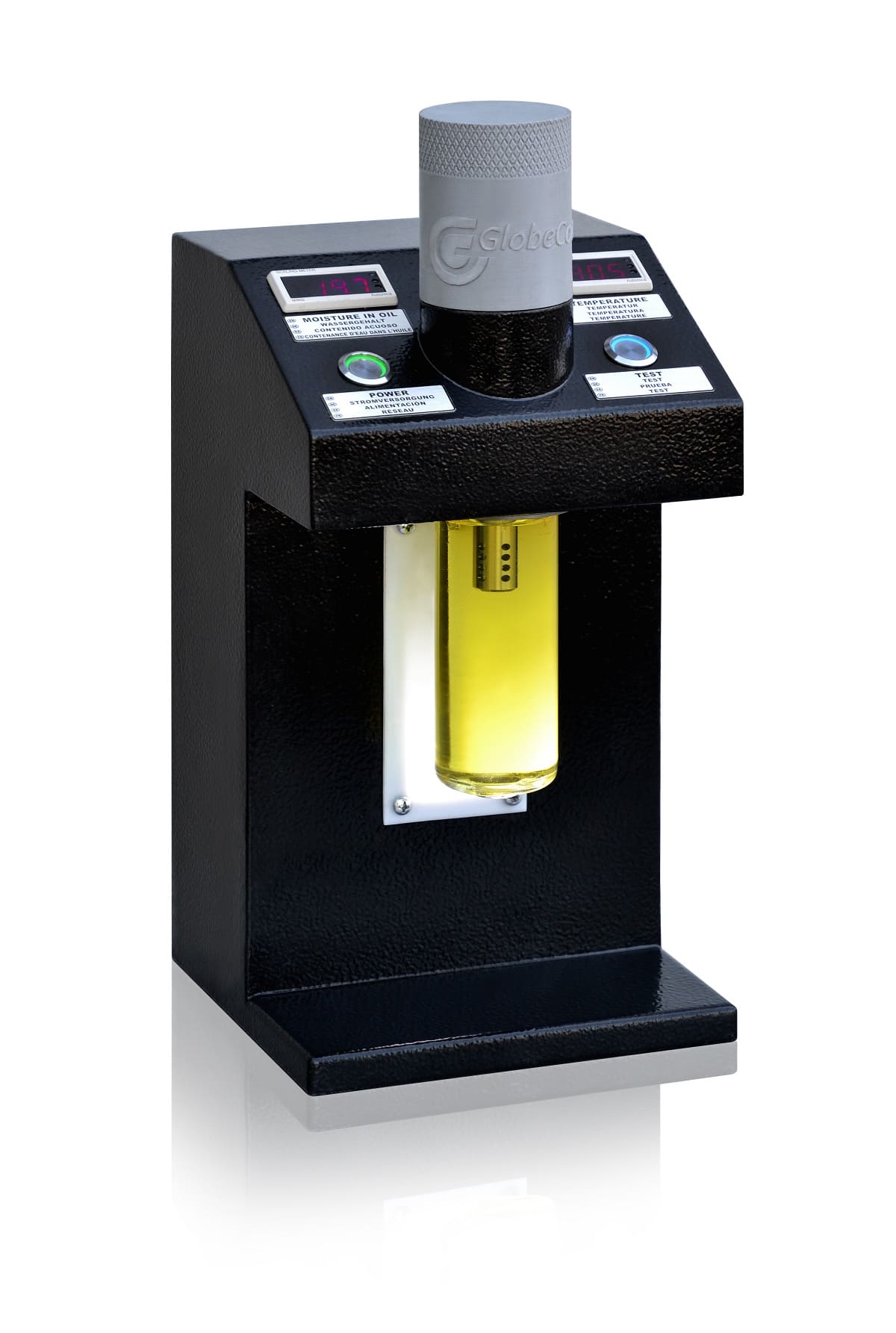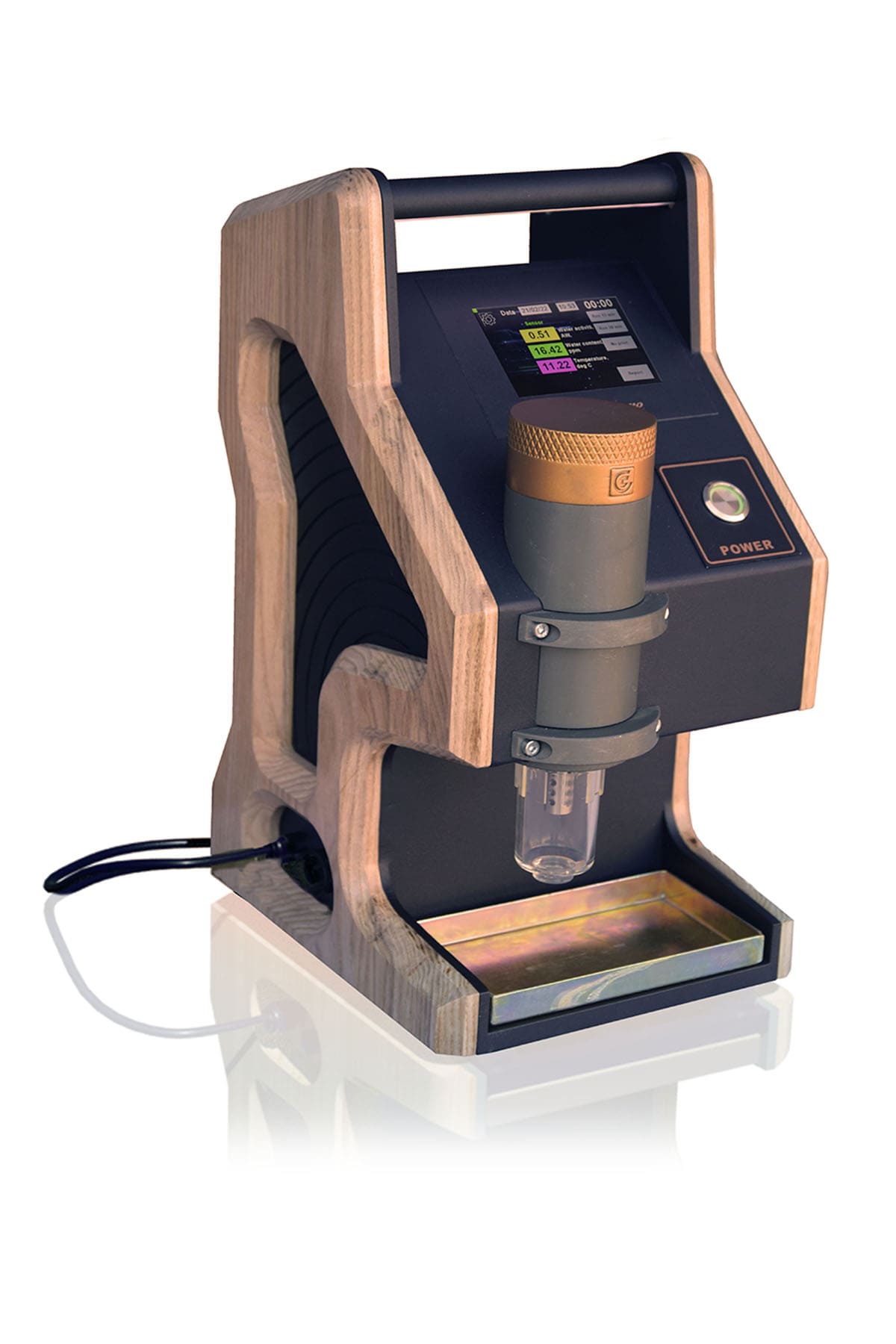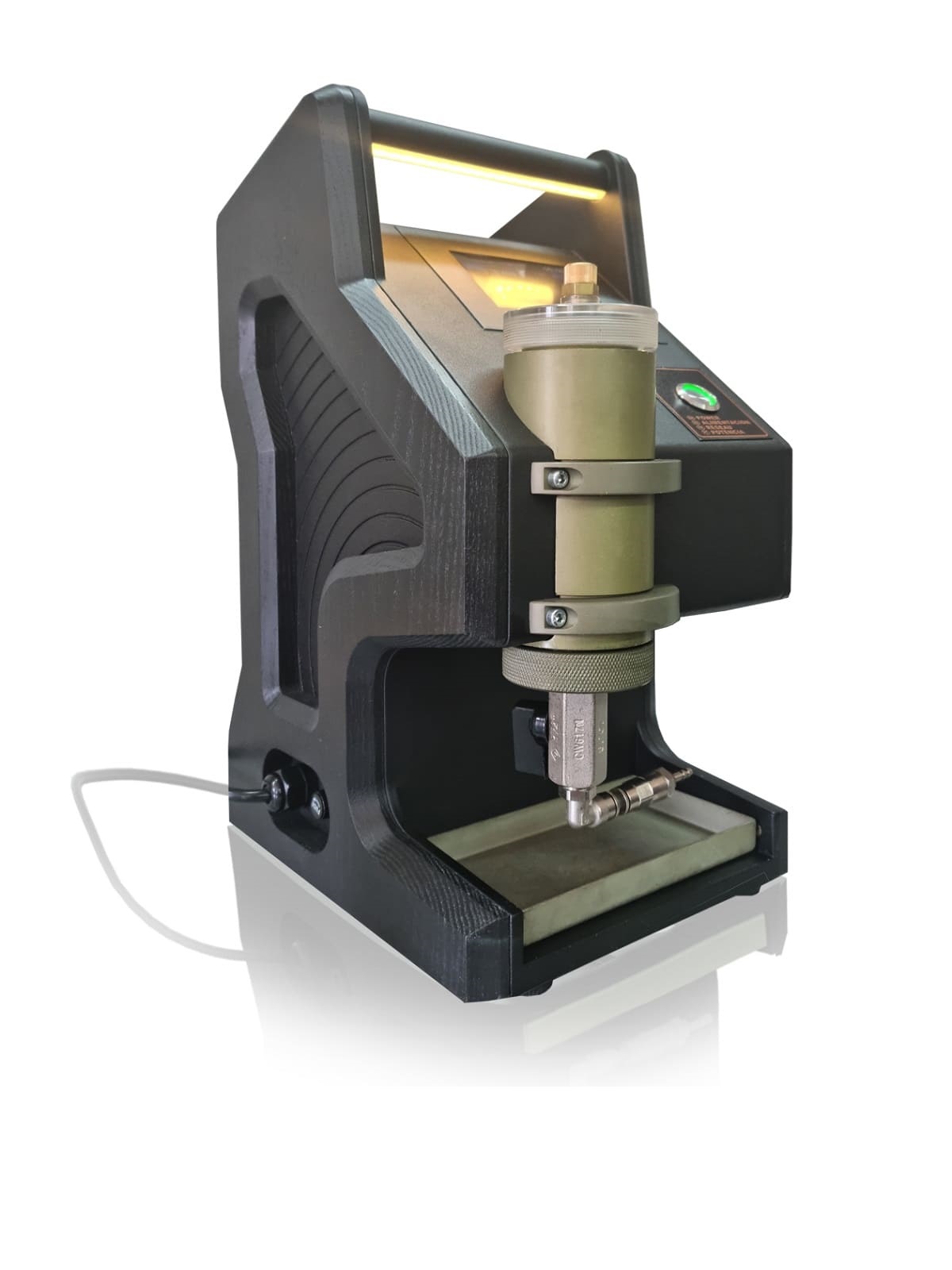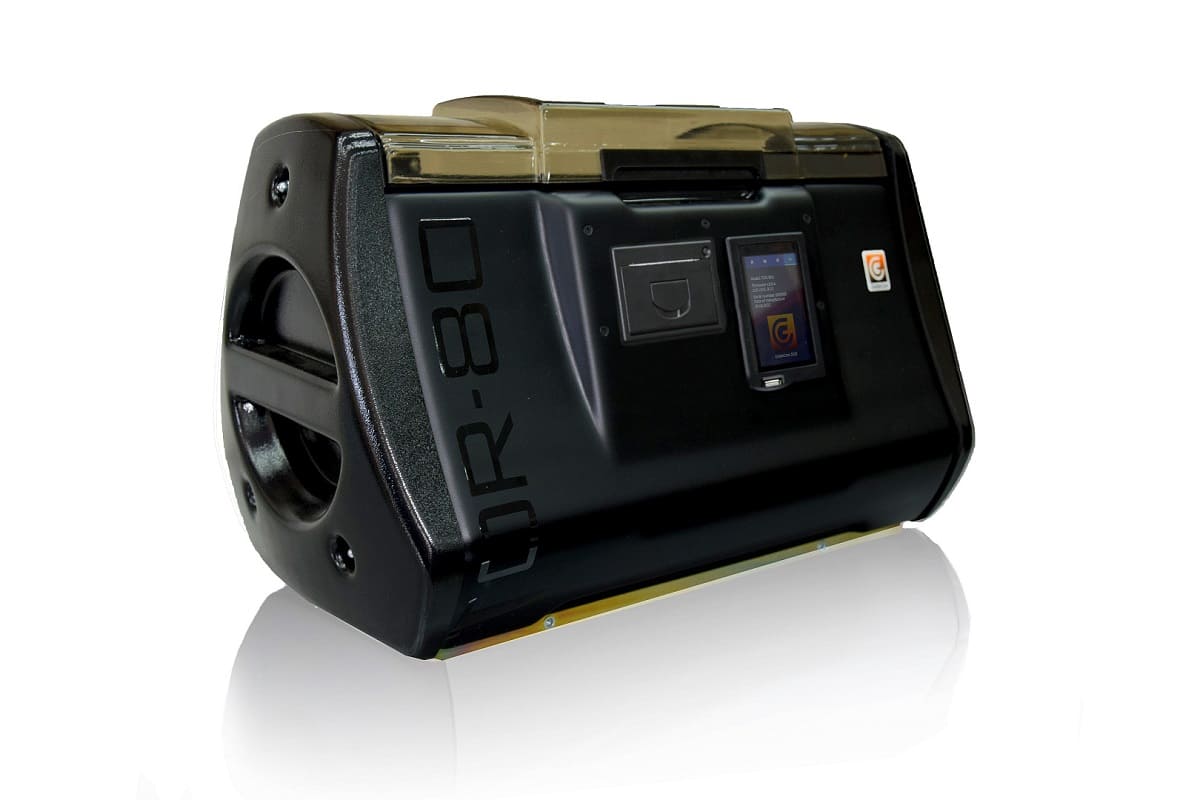An oil moisture meter is an instrument that is used to determine the amount of water in industrial oils: transformer, lubricating, turbine, transmission, and other oils. In this article, we are going to discuss the most important matters related to oil wetness:
- how water gets into oil;
- in what forms water can be contained in oil;
- why is the presence of water in oil hazardous;
- what methods can be used to accurately determine the amount of water in oil;
- ТОR-1 oil moisture meter.
Ways of water ingress into industrial oils
The ways of water ingress into oil can be conveniently classified into two types. The first type is operational when water is formed just during the operation of oil-filled equipment or gets into the equipment when it is operating due to seal leakiness. This is mainly associated with high loads and extreme temperatures which cause the occurrence of water-forming chemical reactions. For example, in transformers, water results from cellulose aging and oxidation. And in turbine units — due to condensation of steam which begins to evolve at high temperatures.
The second type is non-operational factors. Water may get into the oil from the air during transportation or storage in containers at a warehouse. Therefore, an oil moisture meter should also be used before filling the equipment with oil.
Forms in which water can be contained in oil
Water can be contained in oils in three different forms:
- dissolved water;
- emulsified water;
- free water.
Dissolved water is the water associated with active substances that appear during the oil aging process, as well as the water adsorbed by mechanical impurities that are suspended in oil. Emulsified water is water globules suspended in oil. The size of globules is determined by “the dew point” and the actual temperature of emulsified water-oil. Free water appears in oil as a result of direct ingress into the tank.
In new transformer oils with a low aromatic hydrocarbon content, almost the whole moisture is contained in dissolved form. Dissolved water forms a solution in oils and virtually does not affect the change in insulating characteristics; in other words, it does not reduce the breakdown strength of liquid dielectric. But when the temperature drops, there develops water in the form of condensate which is converted to emulsion water increasing the dielectric loss of oil. In aged transformer oils, most of the moisture is contained in bound form.
An oil moisture meter shall provide the most complete and accurate information regardless of the form in which water is contained in oil. The units used to measure the moisture content of oil are grams per ton (ppm) or weight percent.
Hazards of water to oil
Water is a hazardous impurity for any industrial oil. Getting into transformer oil, water deteriorates its insulating properties which leads to dielectric breakdown. The greatest hazard to the transformer exists when the temperature fluctuates. In this case, any dissolved moisture deteriorates the dielectric properties of insulation and leads to its degradation.
Furthermore, water contributes to oxidation of industrial oils, changes their viscosity, and causes foaming. The oil film strength decreases which accelerates the friction parts wear.
The use of water-cut engine oil is hazardous due to enhanced rusting and corrosion processes. It makes steel brittle and increases the risk of damage to parts of an internal combustion engine.
Furthermore, if oil contains any additives, the increased water content can lead to washout thereof and deteriorate the oil performance.
In addition, water is an insidious impurity, because it can not only adversely affect the properties of oil, but also enhance the negative influence of other factors.
Maximum moisture content of oils
Oils of various origin, i.e. mineral, silicone oils and esters, are used as a dielectric. The technology for obtaining these oils differs, so do their properties, including the tendency to dissolve water.
Hydrocarbon molecules are hydrophobic; therefore, mineral oils have low water solubility at the level of 30–60 ppm (g/t). Silicone oils and esters have a higher saturation limit that equals 150–300 ppm and 300–2,600 ppm respectively.
The water content of the oil poured into film- or nitrogen-protected transformers, sealed bushings, and sealed measuring transformers shall not exceed 10 ppm (10 g/t). Film-unprotected power transformers and unsealed bushings must be filled with transformer oil that has the water content of not more than 25 ppm. The oil having the water content of not more than 10 ppm is considered to be dry, but when delivered, the moisture content of oil may reach 35 ppm which requires the use of drying processes (thermal vacuum or zeolite-based drying). However, the decision to perform drying is made only when the oil moisture meter has shown that the parameter exceeds the permissible value.
Methods for determining the moisture content of oil
The methods used for transformer oil moisture test are classified into three groups:
- methods based on water extraction and measurements by means of chemical reactions. This group includes the coulometric Karl Fischer titration and the calcium hydride method. In the hydrocalcium method, measurements are taken of the volume of gases evolved as a result of interaction of calcium hydride (CaH2) and the water contained in oil. The Karl Fischer method involves the determination of water by automatic coulometric titration. The essence of determining the moisture content of oil in terms of quantity consists in automatic measurement of the amount of electricity consumed for water electrolysis in the Karl Fischer chemical agent;
- methods based on physical extraction to the equilibrium level and on measurements with the use of a gas chromatograph and photoacoustic emission;
- the capacitance sensor method by means of which indirect measurements are performed for the relative saturation of oil as the conductivity of sensitive film changes. In spite of being accurate, methods for oil analysis in the laboratory take a long time, are difficult to perform, and require enhanced safety measures. Instruments for working near transformers are bulky, and some of them are outdated. Without timely and accurate information about the condition of insulating oil, it will be impossible to guarantee the reliability of high-voltage equipment. This requires compact, precise, fast, reliable and easy-to-operate instruments.
How to take samples of transformer oil correctly
For an informative and correct moisture content test of transformer oil, it is important to have good instruments, as well as to take samples correctly. If a sample is of poor quality and moisture gets into the oil at the sampling stage, it will entail false results and, as a consequence, wrong decisions on adjustment of transformer maintenance program.
For sampling, it is better to hire a qualified specialist who must work in good weather (no precipitation, strong wind, etc.). Samples are taken into dry and clean glassware only, and each vessel must be filled at least 95% of its capacity. Immediately after filling, the vessel is tightly closed with a stopper. The samples are then stored in a dark place until a transformer oil moisture test is carried out.
TOR-1 moisture tester from GlobeCore
GlobeCore company has developed TOR-1 instrument. It is designed to determine the mass fraction of moisture in insulating oils, even in small amounts. In addition to the absolute moisture content in ppm, the instrument also measures the oil temperature. The accuracy and stability of measurements are achieved through the use of a capacitance sensor insensitive to contaminants that may be contained in insulating oil.
The instrument measures water activity and temperature. Using these quantities, TOR-1 tester calculates the moisture content (ppm) of mineral transformer oil. The moisture content of non-mineral transformer and lubricating oils can be calculated only after loading the specific parameters of these oils into the instrument.
TOR-1 oil moisture meter is easy to carry and transport due to its compactness: its height does not exceed 38 centimeters, and its length and width are not more than 18 centimeters.
The instrument design is simple, and its operation does not require highly qualified service staff. Upon pressing the button to start measurements, the values of moisture content and temperature are displayed. A more accurate result is available in ten minutes. After that, you can start testing the next oil sample.
The instrument protection rating allows testing the insulating oil near transformers in any weather, and the sensor operates at the ambient temperatures of -40 to +60 degrees Celsius. The operation reliability is achieved through the use of metal vandal-resistant buttons, metal protection of the sensing element, stabilized power supply, and integrated protection of electrical equipment.
Thus, TOR-1 instrument saves time and reduces the labor intensity of measurements under any operating conditions. It can be used both independently and as part of mobile laboratories for online oil analysis in the field.
Having accurate and immediate information about the moisture content of oil in the transformer, it is possible to adjust the equipment maintenance program in time and to prevent serious consequences: accidents and costly repairs.
How to dry industrial oils
There are several ways to remove water from industrial oils: centrifugation, thermal vacuum drying and running through a zeolite layer. Although centrifugation as a drying method is distinguished by simplicity, it has become obsolete and outdated. A more modern method is thermal vacuum drying where the oil is first heated, after which water and gas vapors emerge from its surface and are removed by means of vacuum. Zeolite drying is distinguished by its high efficiency and instrumentation simplicity. Zeolite sorbent has a high ability to absorb water and retain it in its granules. After saturation, the sorbent properties must be reactivated after which zeolite can be reused for oil drying.


 TOR-1 Oil Moisture ...
TOR-1 Oil Moisture ... TOR-2 Hydrogen and ...
TOR-2 Hydrogen and ... TOR-80 (TOR-80 LSL) ...
TOR-80 (TOR-80 LSL) ...